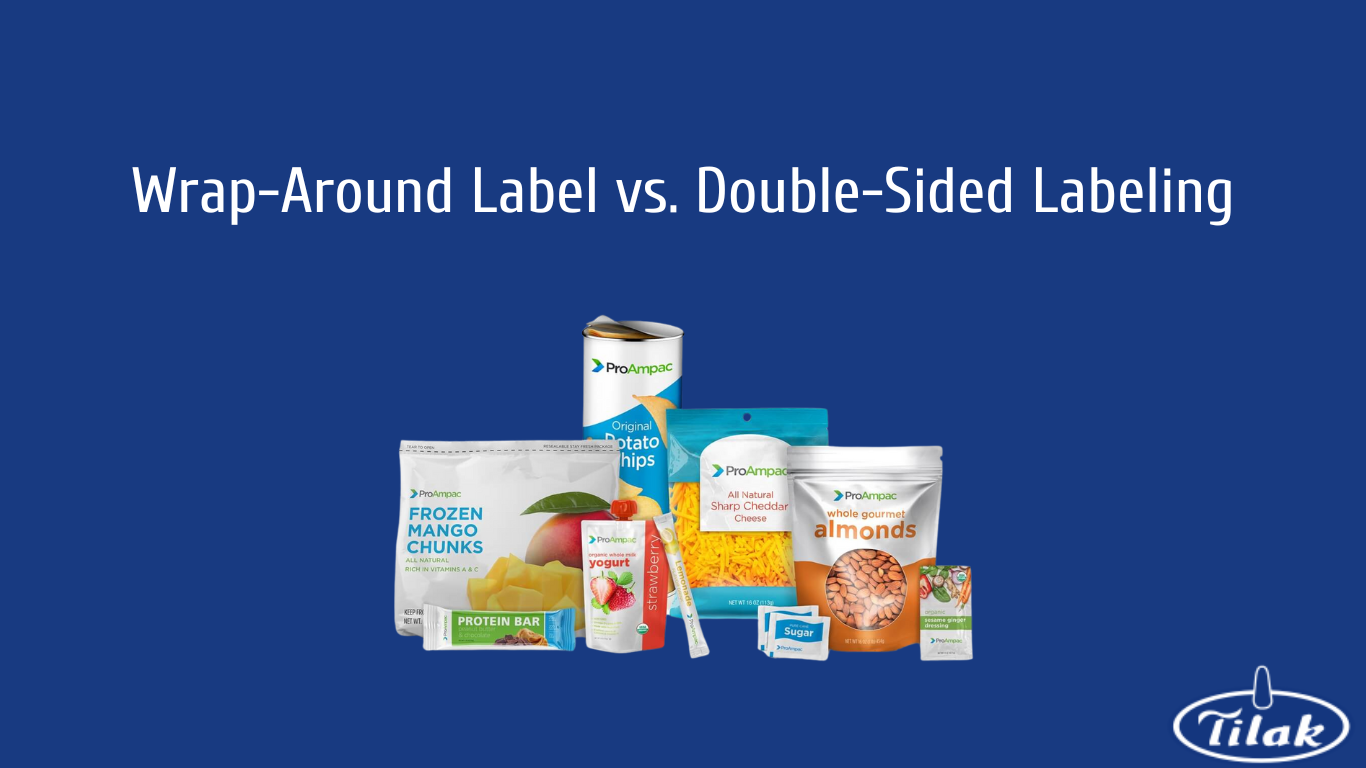In the competitive world of marketing, product labeling plays a critical role in capturing consumer attention. More than just a sticker, a label acts as your product’s first impression, legal guardian, educator, and brand ambassador. But with limited space on packaging, businesses today face a challenge: how to create labels that effectively communicate everything they need to? Wrap-around and Double-sided labels emerge as two popular solutions, each offering distinct advantages depending on the product and its labeling requirements. This comprehensive guide delves into the details of these label types, empowering you to make an informed choice that strengthens brand visibility and builds consumer trust.
The Labeling Conundrum
Product labeling serves as a vital bridge between your brand and your customers, conveying crucial information and laying the groundwork for a positive brand experience. But here’s the rub: with limited label space and ever-growing regulatory requirements for mandatory inclusions, how do you make your label impactful? This is where understanding the intricacies of Wrap-around and Double-sided labels becomes crucial.
Understanding Wrap-Around Labels
Wrap-around labels, also known as cylindrically applied labels, take product labeling to a whole new dimension – literally. Designed to fully or partially encircle a product, these labels offer a significant advantage: maximized real estate for branding and information.
Benefits & Advantages:
- Increased Label Space: Compared to traditional single-sided labels, wrap-around labels provide a panoramic canvas for showcasing essential details like instructions, ingredients, legal text, and of course, your brand messaging.
- Enhanced Branding Potential: The 360-degree coverage allows for creative brand storytelling and impactful visuals, making your product stand out on crowded shelves.
Considerations & Potential Challenges:
- Application Complexity: Applying wrap-around labels often requires specialized equipment and expertise to ensure smooth adhesion and avoid wrinkles or misalignments.
- Design Considerations: Designing for a wrap-around format requires careful planning to maintain visual flow and prevent information from getting distorted at the label’s seam.
Double-sided labels
Double-sided labels offer a clever solution for maximizing labeling space on flat or rectangular products. Unlike wrap-around labels, they utilize both sides of the label, creating a clean and organized presentation of information.
Benefits & Advantages:
- Improved Information Hierarchy: Double-sided labels allow for a clear separation of information, with key details like branding and marketing messages on the front and more detailed instructions or nutritional information on the back. This enhances readability and user experience.
- Enhanced Design Flexibility: The ability to utilize two surfaces allows for more creative design possibilities, fostering a visually appealing and cohesive brand experience.
Considerations & Potential Challenges:
- Limited Overall Label Space: While double-sided labels offer more space than single-sided options, it’s still important to prioritize information effectively due to the limited total area.
- Readability on Backside: Depending on product placement on shelves, reaching and reading information on the back label might be inconvenient for consumers. Consider label size and placement for optimal readability.
Selecting the perfect label isn’t a one-size-fits-all proposition. To make an informed decision that aligns with your brand goals and product requirements, several key factors come into play.
Decision-Making Matrix: (Consider including a downloadable decision-making flowchart here – valuable resource for readers)
- Product Shape & Size: Cylindrical products like bottles or jars are prime candidates for wrap-around labels, while flat or rectangular surfaces like boxes benefit from double-sided labeling.
- Information Requirements: The amount of information you need to convey plays a crucial role. Wrap-around labels offer more real estate for extensive details, while double-sided labels might require prioritizing information for optimal clarity.
- Branding & Design Goals: Consider your desired visual impact. Wrap-around labels provide a panoramic canvas for creative storytelling, while double-sided labels allow for a clean and organized presentation.
- Budget Considerations: Factor in both upfront label costs and potential application costs. Wrap-around labels might require specialized equipment, affecting overall budget.
Conclusion
Selecting the right label isn’t just about regulations; it’s an investment in your brand’s long-term success. By understanding the strengths and limitations of wrap-around and double-sided labels, you can craft labels that not only comply with regulations but also elevate your product’s visual appeal, enhance consumer experience, and ultimately drive sales. Remember, your product label is a silent salesperson – a brand ambassador that makes a lasting impression on potential customers.
Embrace Sustainability: Today’s eco-conscious consumers appreciate brands that prioritize the environment. Explore sustainable labeling solutions, such as recycled materials or soy-based inks, to showcase your brand’s commitment to a greener future.
Ready to Make Your Label a Standout?
At Tilak Polypack, we offer a wide range of sustainability-minded, practical labeling solutions designed to make your brand shine. Explore our FLEXIBLE LAMINATE ROLLS & POUCHES options or contact us today for personalized advice and solutions tailored to your specific needs. Let us help you craft a label that reflects your brand values and becomes a part of your brand’s lasting legacy.

